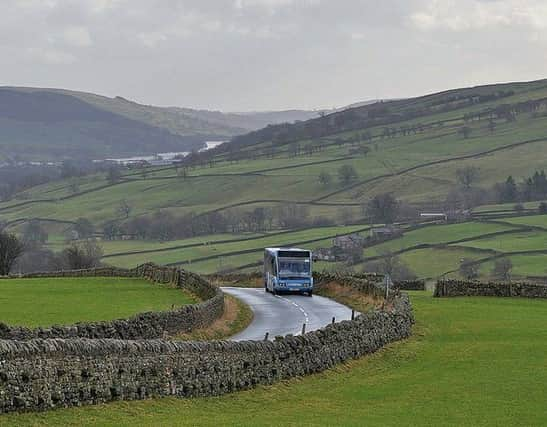Alastair Dalton: Travel is all about the joy of the ride


I don’t mean where you travel, but how you get there.
Most of us go everywhere by car, but because of their speed and your perspective as a driver or passenger, you are likely to take in less of the passing landscape than going by other means.
At the opposite end of the scale, you notice the most while walking or cycling, but even travelling by bus and train provides a better sense of the environment than from behind the wheel.
Advertisement
Hide AdAdvertisement
Hide AdHowever, I’m guessing many car owners won’t even consider such options because of their perceived inconvenience. For them, it may be a case of no car, no travel, with perhaps the exception of a taxi for shorter trips.
However, sometimes the opportunity to strike out by a different mode arises, perhaps when your car is not to hand, such as when it is being used by another member of your family.
For me – call me odd – this provides the chance to experience a familiar journey in a new way, but also to see other ways of getting around through the eyes of those who rely on them, including visitors and tourists.
What struck me most from one such trip last weekend, from Glasgow to Killin on Loch Tay, was how much more user-friendly public transport needs to be and can be – with simple improvements.
To persuade people to choose greener, safer and less congestion-causing ways of travelling than the sheer simplicity of taking the car, they must be as effortless.
However, while motorists basically only need to get into their car and follow a map, signs or satnav to get to their destination, those taking buses and trains on unfamiliar routes have to both constantly keep their wits about them and expect the unexpected.
Driving can often be unproductive “dead time” when other forms of transport offer the chance to work, read and think. But if that’s an important consideration, you might be deterred by risking not getting a seat.
That happened both on my trip, and two days before, when ScotRail failed to put passengers’ seat reservations on Glasgow-Inverness trains. Alighting at Stirling, I knew where the bus station was for the next leg of my journey, but I didn’t see any direction signs until I was well out of the railway station.
Advertisement
Hide AdAdvertisement
Hide AdNext, I had to find the right stance for my bus to Callander. As I reached the bus station, the first noticeboard I encountered handily contained a list of destinations and stance numbers, but it could have done with a heading to that effect. It should also have been far bigger – filling the space available – to make it more legible.
The bus left on time, so no problem there. But the through rail-bus ticket, sold by a helpful ScotRail ticket office clerk at the start of the journey, seemed to throw the First Midland Bluebird driver, who just frowned at it. Welcome aboard.
It was all going so smoothly until I reached Callander. I got off the bus to find to my horror the bus stop timetable said the bus for the final section of my journey to Killin did not run on a Saturday. I only found out that was incorrect because a woman at the stop said her husband was driving the bus. That’s an epic fail.
A minibus providing the service duly arrived, and I was on my way, along with some old ladies, a dog and a couple of backpackers. How much fuller it could have been – but I doubt with many car drivers.